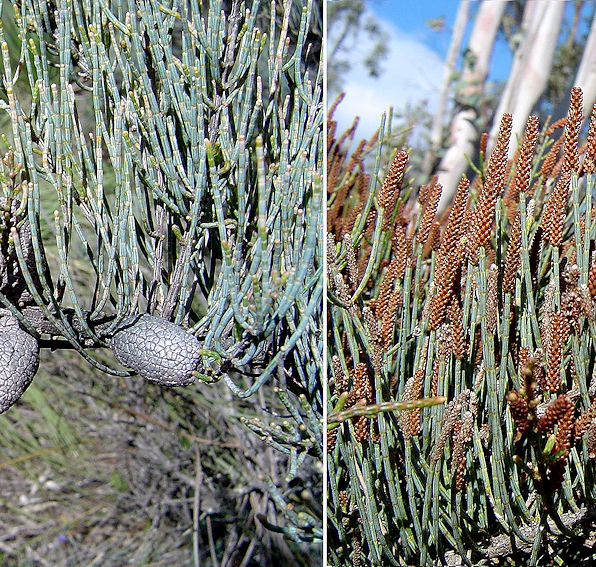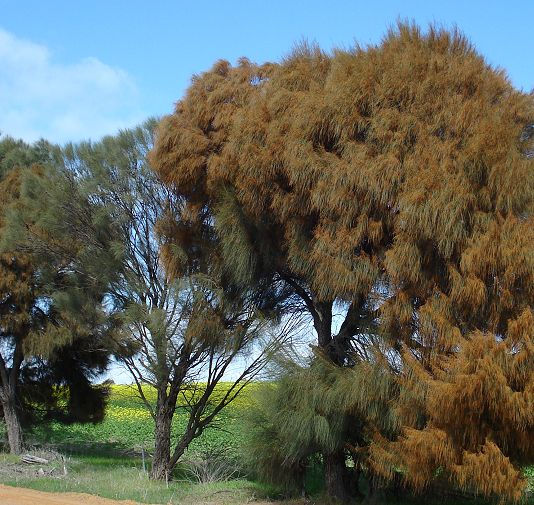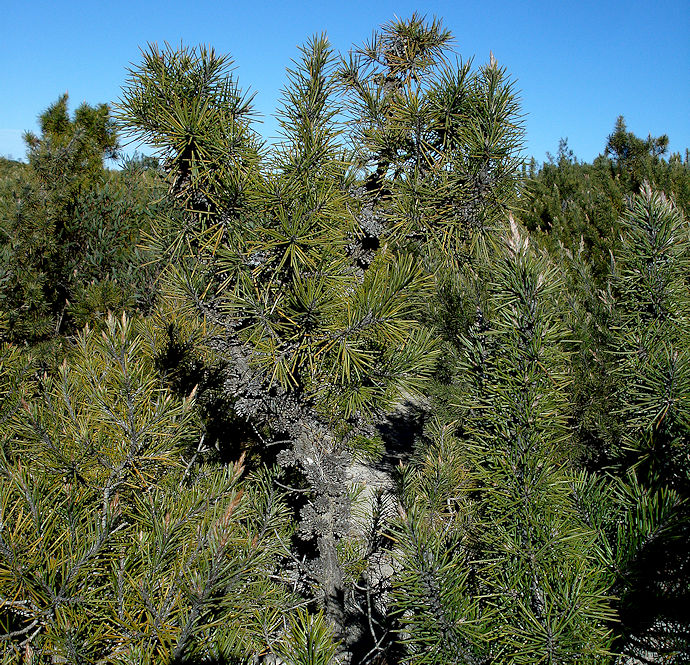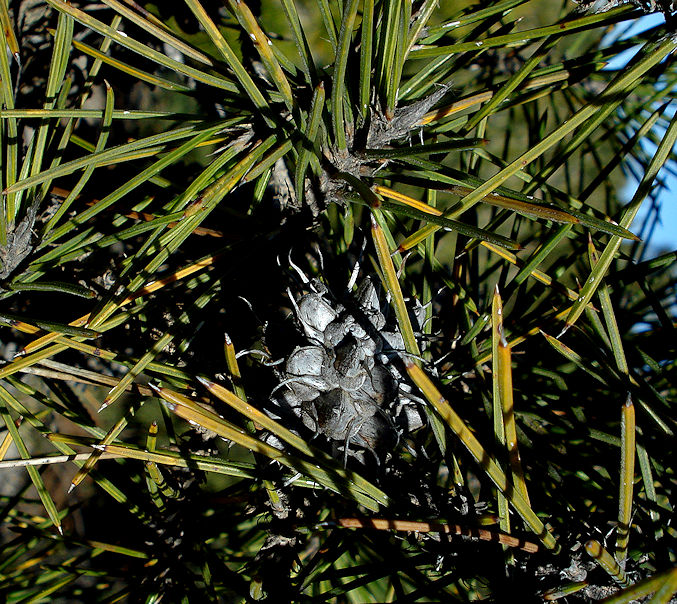Belonging to the Casuarinaceae family, these plants are instantly recognised by their needle - like foliage and the wonderful sighing sound of the wind passing through them. Around Narrogin we tend to notice the trees most: Rock sheoak; Allocasuarina huegeliana on well drained soils, and salt sheoak; Casuarina obesa in semi saline lakes and waterways. A bed of sheoak needles with a whispering wind overhead is a wonderful place for courting couples (after they have repelled the ants, ticks and mosquitos). The name casuarina is derived from the Malay word for cassowary, due to similarities of layered feathers/ needles. If you look closely at a needle you will notice rings of scales, which are the true leaves. The green needles are in fact photosynthesizing stems.
Tammas or tammars, are bushy plants, which become dominant on gravelly soils general east of a line through Yealering and Harrismith.
Casuarinaceae have male and female plants, but differ from the animal world in that the females have the nuts (cones). Casuarinas and Allocasuarinas have subtle differences in cone structure.
Males produce pollen that is blown by wind to female flowers. Like most wind pollinated species, huge amounts of pollen are produced, and you will notice now green female and orange pollen- bearing males everywhere.
The vast majority of plants in the bush have root modifications (cluster or proteoid roots) and alliances with fungi (mycorrhizas) to forage for phosphorus and/or gain water from tiny soil pores.
Plants on poor sand or gravel soils mainly have cluster roots that are also instrumental in forming gravels.
Eucalypts and other plants on more fertile soils mainly use mycorrhizas.
Casuarinaceae have cluster roots, ectomycorrhizas (where the fungus does not invade the plant root), AND nodules where bacteria produce nitrogen like legumes. They are truly adaptable plants.
Rock sheoak is an aggressive colonising species. The name comes from them originally being most common around granite rocks.since European settlement they have spread greatly on roadsides and other well drained areas of bush I frequently see roads with remnant wandoo vegetation on one side of a road and rock sheoak thicket on the disturbed other side. The PDF below shows images relevant to this district
| narrogin_sheoaks_tammas.pdf |
My favourite is the compass bush; Allocasuarina pinaster, which occurs in the Lake Grace area on grey sandy gravels. The nearest Location is Holden Road near Tarin Rock.



